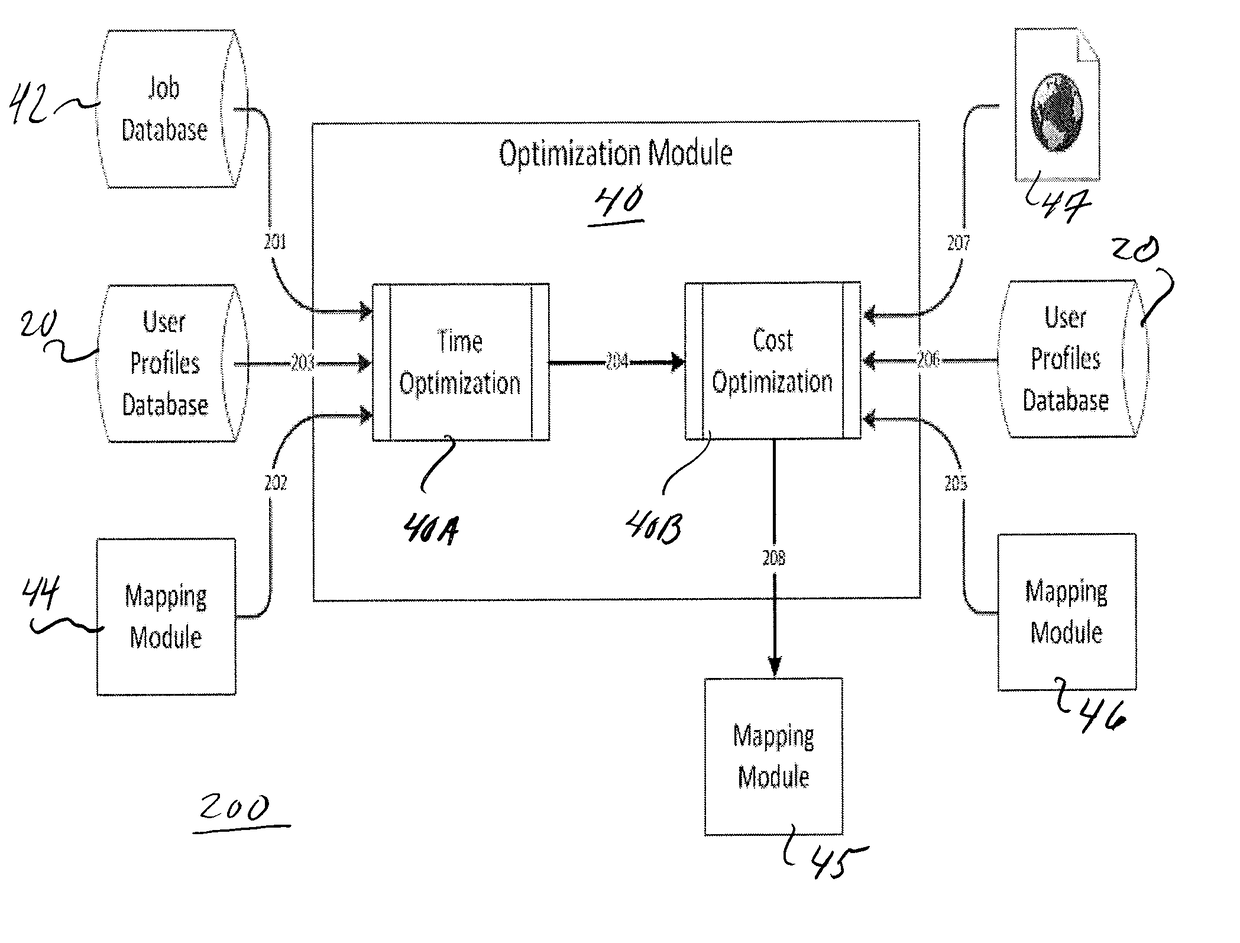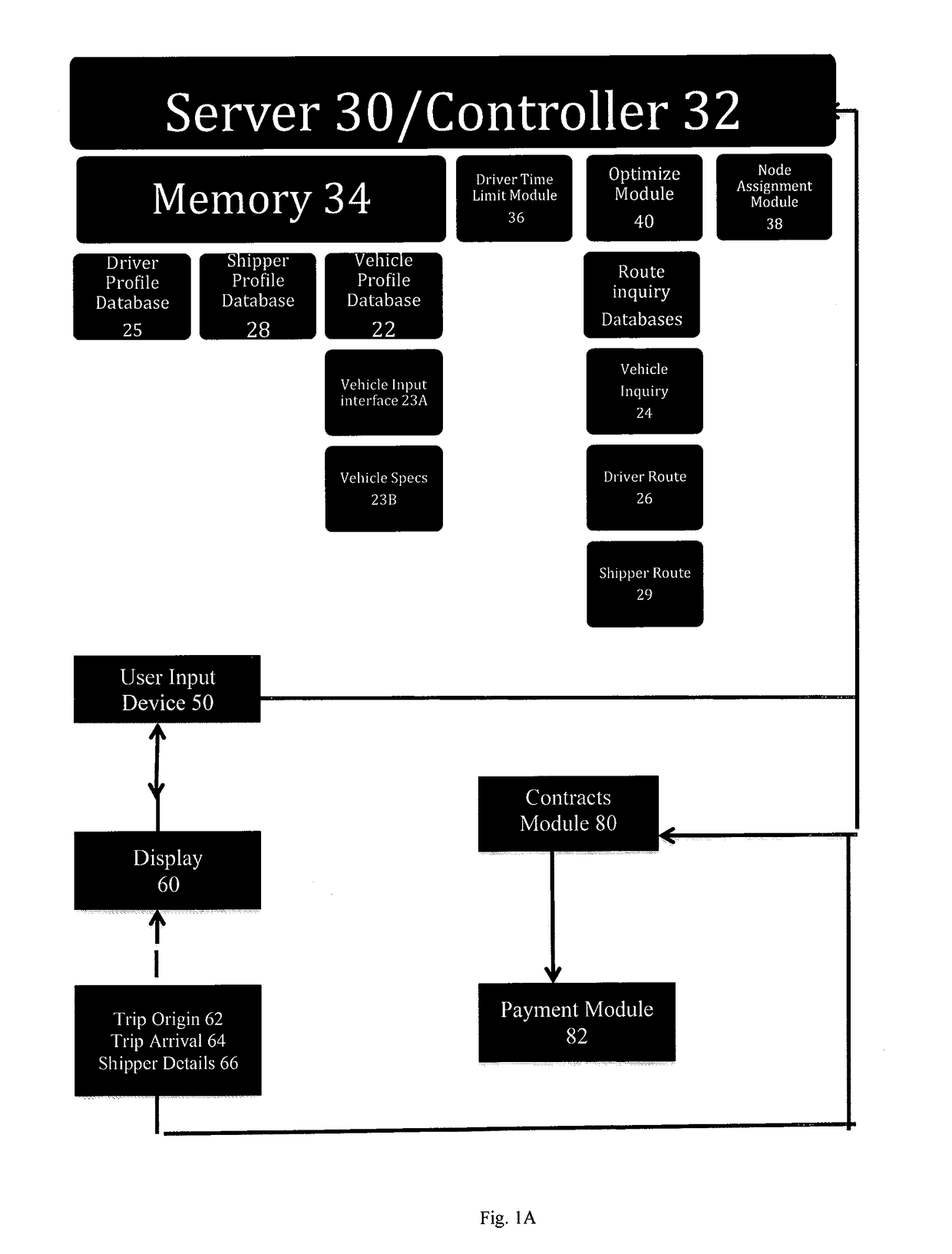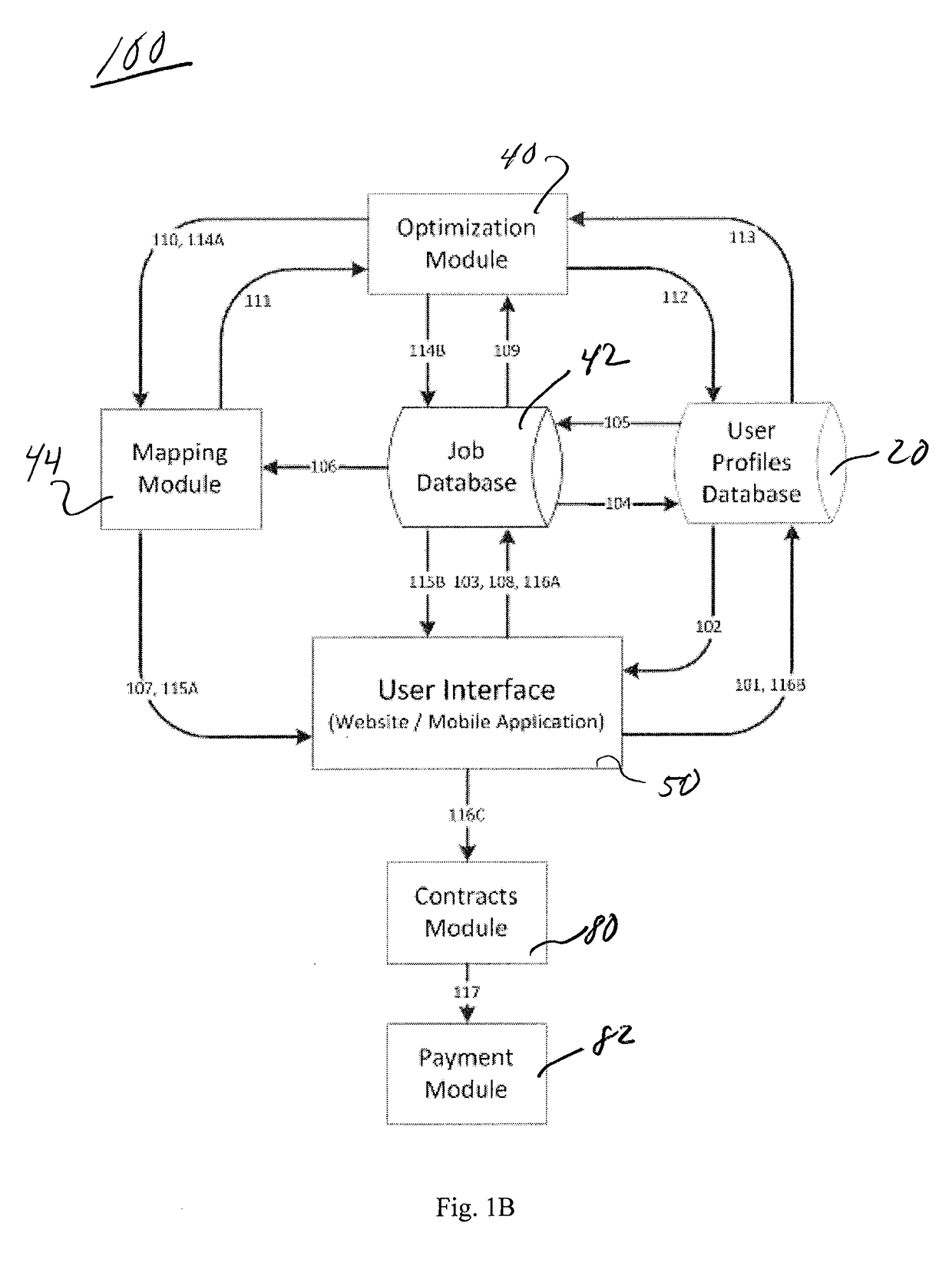Route optimization system and methods of use thereof
a technology of route optimization and optimization system, applied in the field of transportation and route selection, can solve the problems of increasing operating costs, increasing operating costs, and increasing economic pressure on cmvs, and achieving the effect of lowering the trip cos
- Summary
- Abstract
- Description
- Claims
- Application Information
AI Technical Summary
Benefits of technology
Problems solved by technology
Method used
Image
Examples
Embodiment Construction
[0031]The various embodiments of the invention optimize driving route and asset utilization in, for example, the freight trucking industry by minimizing vehicle downtime, enabling the vehicle owners or shippers to reliably hire independent drivers along a vehicle route and avoid having to stop a vehicle or the load it is carrying during the mandatory driver rest periods. Also, other related embodiments of the optimization system schedule multiple driver engagements to minimize payments for non-driving time or return trips. There are multiple groups involved in the industry that may benefit from the asset and route optimization system of the invention, e.g., vehicle owners, drivers, shippers, manufacturers, and consumers.
The System
[0032]The system and method presented provide a means of vehicle asset and route optimization. The optimization may be based on a plurality of calculations derived from both user input and system functionality, e.g., vehicle owner generated route inquiry, a...
PUM
 Login to View More
Login to View More Abstract
Description
Claims
Application Information
 Login to View More
Login to View More - R&D
- Intellectual Property
- Life Sciences
- Materials
- Tech Scout
- Unparalleled Data Quality
- Higher Quality Content
- 60% Fewer Hallucinations
Browse by: Latest US Patents, China's latest patents, Technical Efficacy Thesaurus, Application Domain, Technology Topic, Popular Technical Reports.
© 2025 PatSnap. All rights reserved.Legal|Privacy policy|Modern Slavery Act Transparency Statement|Sitemap|About US| Contact US: help@patsnap.com



